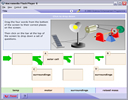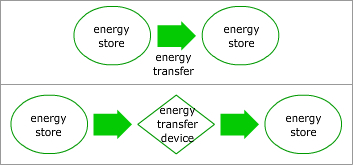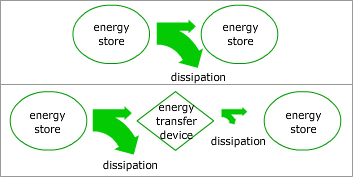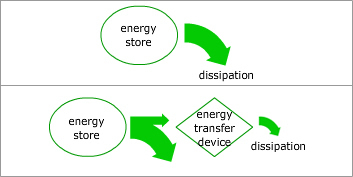| Energy Now > Dissipation and Efficiency > Introduction |
|
Dissipation
and Efficiency - Introduction
Key ideas
- When energy transfer happens, there is usually at least
partial dissipation.
- Dissipation is a spread of energy into the surroundings.
Dissipated energy is less useful.
- We can use energy transfer arrows to indicate the relative
amounts of energy that are transferred usefully and that
are dissipated in any process.
- Efficiency is a measure of the proportion of energy that
is transmitted usefully.
Practical Activity
The practical activity uses the SEP Energy Transfer
Kit, or suitable substitute items, to consider energy flow
and dissipation along a chain of components.
Visualising the ideas
The animations use energy transfer arrows to explore ideas
about dissipation and thereby about conservation.

Click to see animation
|
|
Notes and Principles
A key message of booklets 10 to 12 can be summarized by
the following diagrams.
a. Energy can transfer directly from store to store, or other
energy transfer devices may be involved.

b. Energy can transfer from store partially to a new store
and partially to dissipation. Again, there may or may not
be intermediate transfer devices. Where there are, they may
be responsible for some dissipation.

c. Energy can transfer from store fully to dissipation.

|
|

